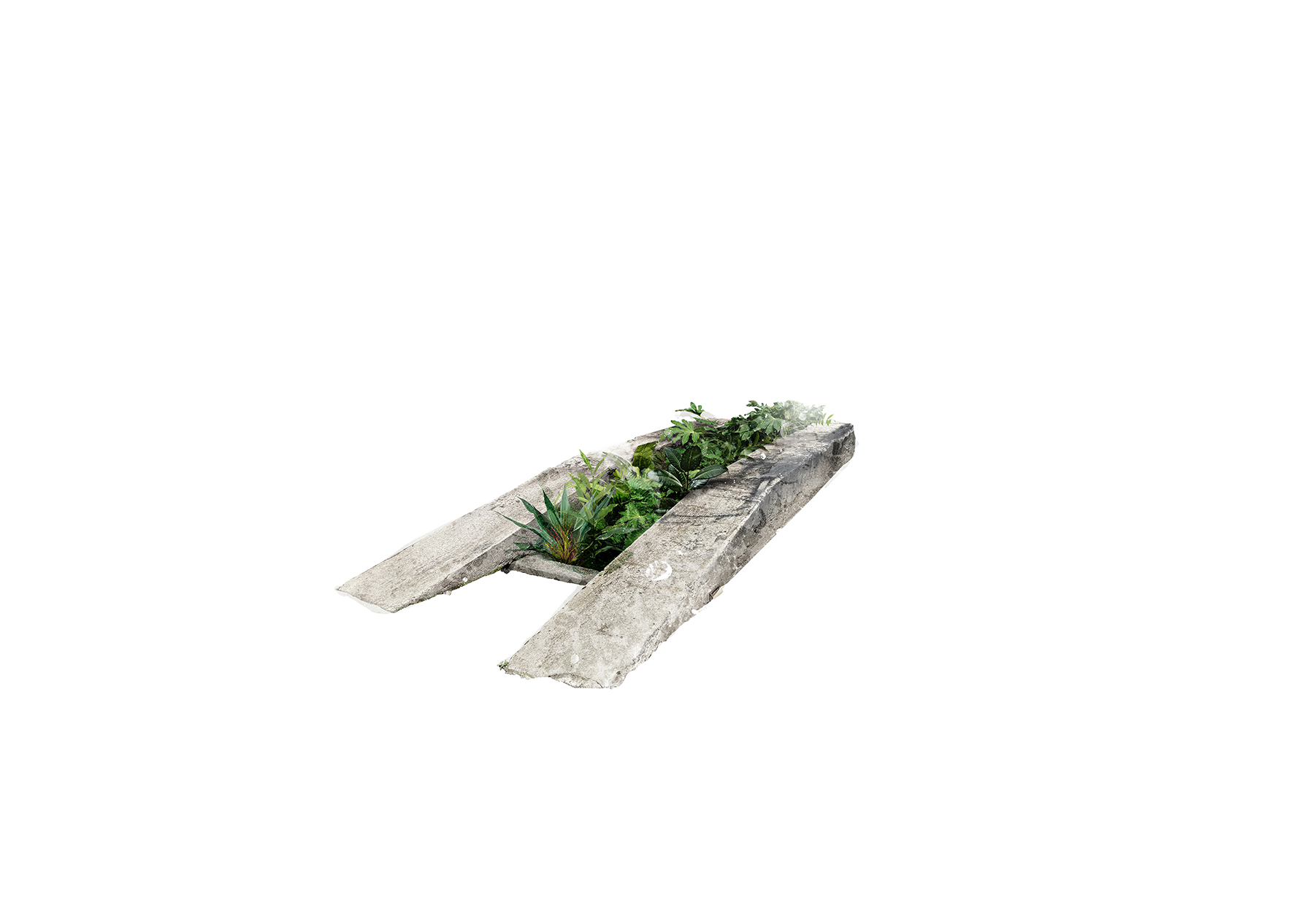Adrián Balseca (1989, Quito, Ecuador) will produce an installation at the Casa Sertanista, a unit of the Museu da Cidade de São Paulo, in dialogue with its history.
From the outside, we see a ramp for changing oil, among the Amazon plants of various species that grow freely, and they occupy, little by little, that space in apparent abandonment. Upon entering the Casa do Sertanista (also called Casa do Caxingui), one of the 13 units that make up the architectural collection of the Museum of the City of São Paulo, we come across tropical islands, cultivated and organized in oxidized cans of different sizes, colors and shapes, which stamp international brands of products from the fossil fuel industry. In the side room, on the right, another island integrates this archipelago, very similar to the previous ones, except for the marks printed on the cans – all from Brazil.
If the outdoor garden turns out to be organic and wild, a consequence of a failed city project, the indoor ones seem to be the result of an ordered landscaping generated by the modern city itself, with the mastery and tropicalism of our dear Burle Marx. In common, the petrochemical residuous, while the Amazon exuberance and exoticism stayed in the heart of the great São Paulo, where once lay an Atlantic Forest coming from the coast to meet the Cerrado, amid the floodplains of the rivers that slowly meandered this plain.
Are these tropical islands small oasis in the big metropolis? Places of refuge and survival amidst of a jungle of rocks? But whose survival would it be? Of people, in search of a few minutes of peace and contemplation? Or those plants that, paradoxically, are born with the petrochemical residuous, products of urbanization and ideas of modernity and progress?
In search for answers, we go to a third room in the house, where there are slides of photographs curated for the exhibition by the Archivo Visual Amazónico, an Ecuadorian institute that maintains a vast collection of documentary images about the deforestation of the rainforest by the extractive industry of rubber, wood, oil and minerals, in addition to showing a little of its immense biome and the indigenous faces that inhabit it.
The petrochemical industry, in particular, explored the Ecuadorian Amazon for three decades (1960-90), leaving its tracks wherever it went, all in favor of modernization and progress. Adrián Balseca has been developing and deepening his research and artistic work around this theme, adding important denunciations of an environmental and ethnic nature, and proposing a fundamental cosmological reflection of the world we live in and that we hope for future generations.
In this sense, Balseca, an Ecuadorian artist invited to participate in the 34th São Paulo International Art Biennial, Faz escuro mas eu canto [Thought it’s dark, still I sing], is strongly connected to the Brazillian territory and its part of the Amazon biome; it connects to the Brazillian history and present. Amongst the units of the Museum of the City of São Paulo, one of the partner institutions of this 34th edition, Balseca soon became interested in the Casa do Sertanista (or Casa do Caxingui), which hosted the Embassy of Peoples of the Forest (1989-93), a non-governmental entity that, coinciding with the Archivo Visual Amazónico, maintained a media library with videos, photos and indigenous music representing 150 Brazilian people and extractive communities. Its purpose was to promote the meeting of technologies and ways of seeing the world, of people who live in the forest with people deprived of this interaction.
With this baggage of information regarding Balseca’s trajectory, we find ourselves facing PLANTASIA OIL COMPANY in the midst of this immense metropolis that, from its beginnings in the old Piratininga Village, had many of its historical, cultural traces, and much of its geography erased. After all, what is original in São Paulo? The Pátio do Colégio, (re)built in the 1970s? The channeled rivers in the underground? The ‘pools’ for fluvial water flow controlled in the impermeable land? Or the Tietê and Pinheiros rivers rectified to make way for our avenues and cars?
In this artificial city setting, we are still experiencing an unexpected and chaotic pandemic lockdown; suddenly, the city that cannot stop found itself forcibly empty; birds walked peacefully along the avenues, the sunset was prismed in beautiful contours of orange and the smoke that erased the stars dissolved… It is in this compelling reality that Balseca comes to propose a rewilding in Plantasia that, from its interior, expands in countless forms, in a play of light and shadow, worthy of a platonic awakening, from the inside to the outside of the cave.
The exhibition is co-produced with Casa do Sertanista / Museu da Cidade and Fundação Bienal de São Paulo.
Curatorship: Gabriela Rios
Learn more about the artist here.
International support: PCAI – Polyeco Contemporary Art Initiative
Service PLANTASIA OIL COMPANY
21 August to 5 December 2021
Tuesday to Sunday, from 10am to 4pm
Free admission. Mandatory use of masks
Casa do Sertanista / Museu da Cidade de São Paulo
-
Caroline A. Jones, Eyesight Alone: Clement Greenberg’s Modernism and the Bureaucratization of the Senses (Chicago: University of Chicago Press, 2005).
-
Greenberg’s Modernism and the Bureaucratization of the Senses (Chicago: University of Chicago Press, 2005).


